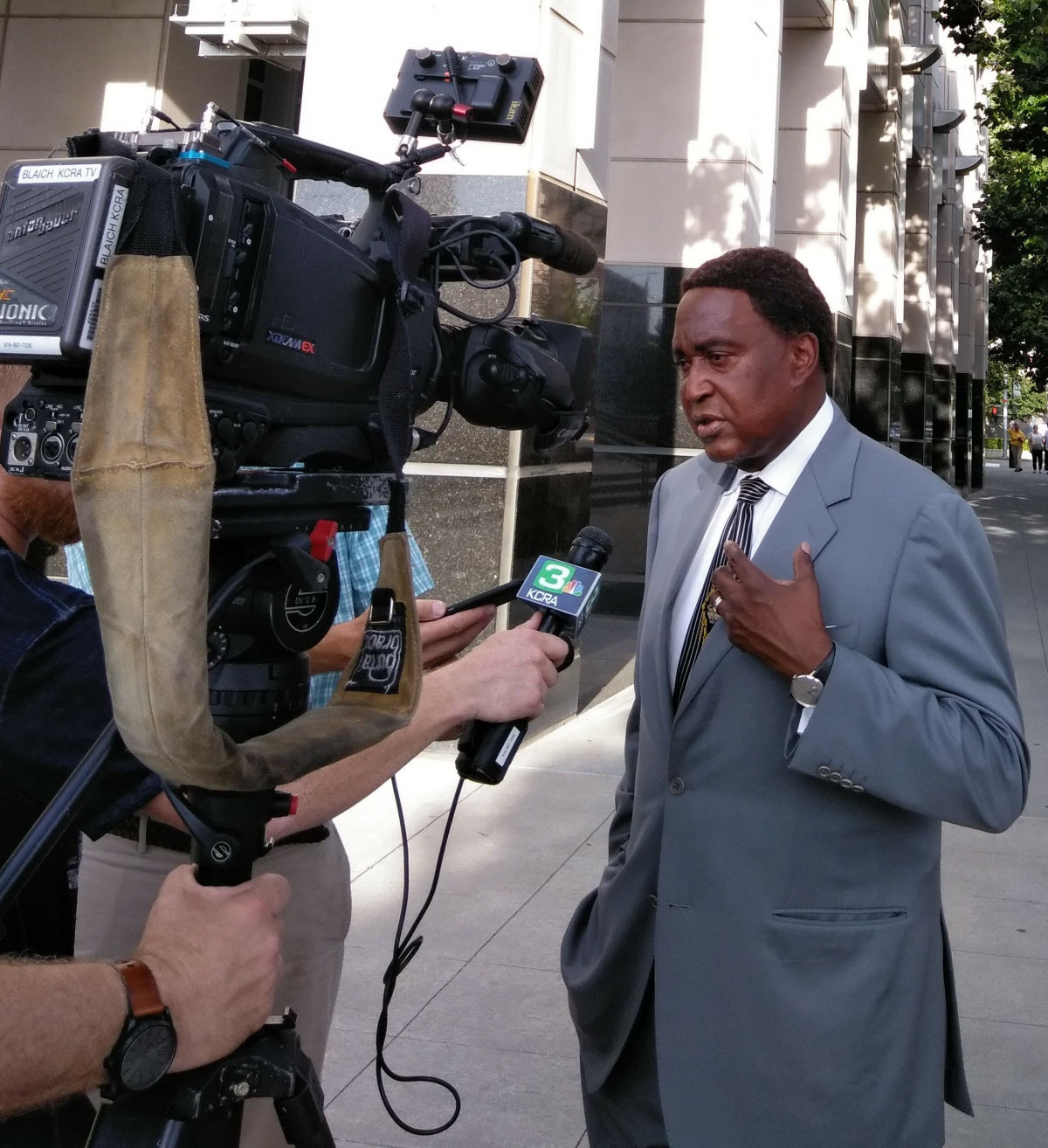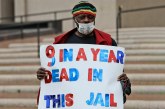

By Crescenzo Vellucci
Vanguard Sacramento Bureau
SACRAMENTO – City of Sacramento taxpayers – not the police who kill and maim – have shelled out millions of dollars in excessive force lawsuits in the past few years. And there’s more to come.
Tuesday, the Sacramento City Council okayed yet another $5.2 million – said to be the largest of its kind in city history – for tasing and crushing 34-year-old John Hernandez so badly in 2017 he died. He was brought back, but now has the mind of a small child because of severe brain damage.
“This never should have happened,” said civil rights attorney John Burris of the incident at a hastily-called news conference in front of the Federal Courthouse late Tuesday.
Burris said a key piece of evidence was that the officers involved – although they tased the unarmed Hernandez up to 10 times – either were not taser trained or admitted to never reading the manuals on how to use the sometimes lethal tasers.
“One officer actually is heard saying ‘let him go,’ but then they all became cowboys,” charged Burris, who said the 125-150 pound Hernandez was not only repeatedly tasered, and beaten with batons but also crushed when much larger officers – one, he said, weighed more than 300 pounds – ground Hernandez into the ground face first.
For taxpayers, it’s adding up. They paid out, on behalf of untrained or poorly trained officers, nearly $3 million last year in 20 plus lawsuits and now $5.2 million for just this one case. Burris alone had another five or six lawsuits pending about excessive force by the city and county of Sacramento.
Taxpayers paid more in this Hernandez case, in part, because he’s not dead. He did die briefly, leading to the debilitating brain damage, but payouts to victims of police brutality who live are much  higher than if the victim of the excessive forces dies.
higher than if the victim of the excessive forces dies.
The crime to which officers responded in 2017 was minor. Hernandez reportedly was making noise and harassing people at a Rite Aid in East Sacramento. Not the crime of the century, but city of Sacramento police responded by sending three officers: Casey Dionne, Ishmael Villegas and Michael Hight.
“It was loitering at most,” explained Burris. But police not only repeatedly tasered Hernandez, but pressed their ultra-heavy bodies on top of him while he was facing down on the pavement, cutting off his air pathway and stopping him from breathing.
“No force was necessary. This is when officers should have used de-escalation. But they didn’t,” said Burris.
Burris, who said Hernandez has been living in “abject poverty” awaiting resolution of the case, now has the means to live decently because of the “constructive settlement.” His “special needs” condition is what led to the settlement, said Burris, adding “I’m really concerned that he be taken care of.”
“He’ll never be the same. But the family is happy that now it’s over,” said Burris.
In a prepared statement for the news media, Sacramento City Attorney Susana Alcala Wood said: “Although the city and involved SPD officers dispute liability in connection with plaintiff’s claim, the parties agreed to settle in order to avoid further, protracted litigation and to eliminate the significant risk to both sides of trying this case to verdict.”
The three officers dispatched did not have body cameras at the time – they were not required in March of 2017 as they are now – but dash cameras caught part of the incident. However, there was no video of the actual struggle when a chase led into a Sutter medical building.
Burris said Hernandez had severe brain damage, kidney failure and other injuries. He took months to recover in the hospital. He was in a coma for weeks. He needs 24-hour supervision and ongoing physical, occupational and speech therapy.
In a statement, Burris added: “There can be never be a winner after a horrific tragedy like this, but Mr. Hernandez’s settlement will ensure that he can be cared for in the years to come.”






This is jacked up – $5.2 million but he’s basically a vegetable.
Did I miss the part where the city had fired the officers and voided any pension eligibility?
You missed the part where state law precludes you knowing that information.
The interesting part includes how much of that money the family gets (guessing 1/2 or less), and how much actually is needed/used for the ‘plaintiff’s’ care…
But combination of State law and past practice precludes us from knowing that information…
@ 5% interest, easily obtainable by good investment, 5.2 Million is $260,000/year without touching the principal…
Just saying…